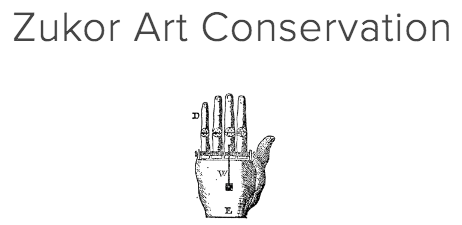Paper in general is highly reactive to light, heat, humidity and acids (both airborne and in adjacent materials). It is absorbent, easily torn and inherently fragile. All paper-based items should be handled as little as possible; they should stored or displayed in an environment that doesn’t contribute to their demise. Attachments such as tapes, hinges, enclosures, etc., should be of acid-free materials. The best protection for art is an archival quality mat or folder, a well-constructed frame with UV filtering glazing, or flat storage in a well-ventilated area.
AGING OF PAPER
Paper will age more slowly if it is made of 100% cotton fibers and is free of bleaches, artificial brighteners, surface coatings and other fillers. Choose papers with the highest content of cotton fiber, known as ‘rag,’ and ones that are acid-free. Ideally, the best paper would be an all-rag paper with a pH of 7.5 or higher.
All materials that are in contact with the artwork should be similarly high quality (acid-free, buffered with an alkaline compound, like calcium carbonate) so as not to affect the paper adversely.
WHAT DAMAGES PAPER
1. LIGHT: all forms of light, whether sunlight, incandescent, fluorescent, halogen or LED are harmful to paper as well inks and colors. Depending on the fiber content, paper can darken and become brittle, or bleach and fade. Even indirect sunlight can, over time, be damaging to all the components of paper and media. Use of Ultra-violet filtering acrylic or glass will reduce light damage, but framed artwork should be always hung in indirect light.
2. HEAT: heat will dry out and embrittle paper, causing it to shrink and distort. Do not hang works of art near any source of heat or place a lamp near the surface.
3. HUMIDITY: relative humidity above 70% encourages mildew or staining on paper. It will also cause paper to expand and/or distort. Avoid hanging art on damp or ‘outside’ walls, but if you do, place bumpers on the corners of the back of the frame to hold it away from the wall, so air can circulate behind it. Make sure there is space between the art and the glazing (glass or acrylic).
4. ATMOSPHERIC POLLUTANTS: Air contains a number of gases that deteriorate paper (such as ozone, sulfur dioxide, carbon monoxide, nitrogen oxides, & lead). Framing an artwork greatly reduces exposure to these pollutants and will limit the changes in heat and humidity that occur in unregulated rooms. Storage in acid-free boxes or folders, in drawers, will provide reasonable protection as well.
WHAT TO LOOK FOR
- Protective housing with alkaline (acid-free, buffered) paper or board
- Stable environment with minimal fluctuation of temperature and humidity; low light levels
- Japanese paste as the adhesive for attachments such as hinges
- Lineco™ archival paper tapes and mounting corners
WHAT TO AVOID
- All pressure-sensitive tapes (Scotch, Masking, duct, any double-sided tapes) spray adhesives, Rubber cement, Elmer’s glue, YES paste, Titebond wood glue
- All heat-set (dry mount) films and photo mount sprays
- Non-archival backing boards, including all ordinary color matboards, corrugated cardboard, Masonite, plywood, manufactured fiber boards; felt-tipped pens (which fade easily), and ball-point pens which are not stable in light or in the presence of moisture.

